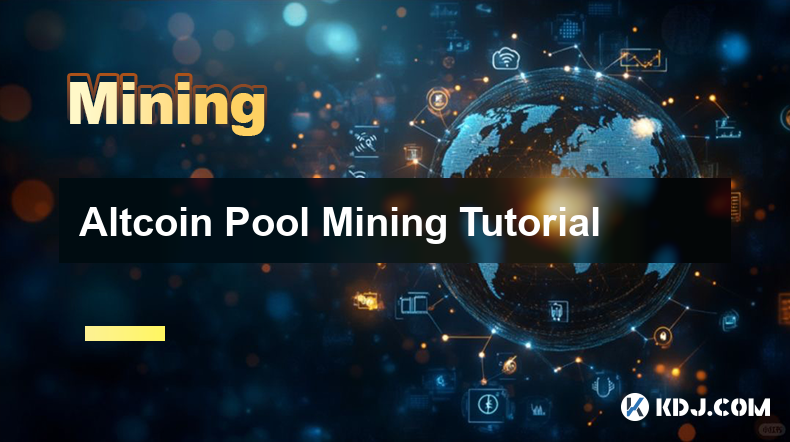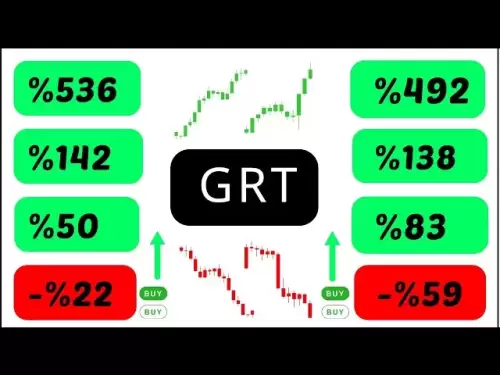-
 Bitcoin
Bitcoin $107,569.2021
1.41% -
 Ethereum
Ethereum $2,430.6950
-0.48% -
 Tether USDt
Tether USDt $1.0005
-0.01% -
 XRP
XRP $2.1884
-0.91% -
 BNB
BNB $647.4445
0.53% -
 Solana
Solana $144.2325
-0.49% -
 USDC
USDC $1.0000
-0.02% -
 TRON
TRON $0.2731
-0.48% -
 Dogecoin
Dogecoin $0.1658
0.61% -
 Cardano
Cardano $0.5694
-2.94% -
 Hyperliquid
Hyperliquid $37.2814
-0.09% -
 Bitcoin Cash
Bitcoin Cash $487.9461
7.41% -
 Sui
Sui $2.7788
-0.50% -
 Chainlink
Chainlink $13.2000
-1.28% -
 UNUS SED LEO
UNUS SED LEO $8.9994
0.22% -
 Stellar
Stellar $0.2417
-2.68% -
 Avalanche
Avalanche $17.6551
-2.73% -
 Toncoin
Toncoin $2.8498
-1.64% -
 Shiba Inu
Shiba Inu $0.0...01166
0.35% -
 Litecoin
Litecoin $84.6510
-0.54% -
 Hedera
Hedera $0.1507
-2.44% -
 Monero
Monero $315.5116
-0.39% -
 Ethena USDe
Ethena USDe $1.0001
-0.04% -
 Polkadot
Polkadot $3.3900
-1.91% -
 Dai
Dai $0.9999
0.00% -
 Bitget Token
Bitget Token $4.4262
3.03% -
 Pi
Pi $0.6122
12.98% -
 Uniswap
Uniswap $7.0039
-0.60% -
 Pepe
Pepe $0.0...09582
-3.75% -
 Aave
Aave $257.8121
-2.70%
Altcoin Pool Mining Tutorial
When choosing a mining pool, investigate pool fees, assess reputation and stability, consider location and connectivity, as well as evaluate security measures for user protection.
Jan 10, 2025 at 06:06 pm

Key Points on Altcoin Pool Mining
- Choosing the Right Mining Pool
- Setting Up a Mining Rig
- Joining a Mining Pool
- Configuring Mining Software
- Monitoring Mining Progress
- Troubleshooting Common Issues
Choosing the Right Mining Pool
- Investigate Pool Fees and Structures: Different pools charge varying fees for their services, such as a percentage of earnings or a flat fee. Consider the profitability of different fee structures based on your estimated mining rate.
- Assess Pool Reputation and Stability: Look for pools with a proven track record of reliability and consistent payouts. Check online reviews and forums for insights into pool performance.
- Consider Pool Location and Connectivity: The closer the pool is to your physical location, the lower the latency and better the mining performance. Ensure your network connection is stable and capable of handling high data traffic.
- Evaluate Pool Security: Prioritize pools that implement robust security measures to protect user funds and mining operations. Look for pools that use SSL encryption, multi-factor authentication, and regular security audits.
Setting Up a Mining Rig
- Select Mining Hardware: Choose mining hardware that is compatible with the altcoin you plan to mine, such as ASICs (Application-Specific Integrated Circuits) or GPUs (Graphics Processing Units).
- Assemble the Mining Rig: Build a mining rig by connecting the mining hardware, power supply, cooling fans, and necessary cabling. Ensure proper ventilation and cooling to prevent overheating and maintain optimal mining performance.
- Install the Operating System: Install a specialized operating system designed for cryptocurrency mining, such as HiveOS or Minerstat, to optimize rig performance and enable remote management.
- Configure BIOS Settings: Adjust BIOS settings to allocate sufficient memory and processing power to the mining software. Optimize memory timing, voltage, and clock speeds for maximum efficiency.
Joining a Mining Pool
- Create a Pool Account: Register for an account on the chosen mining pool website. Provide necessary details and create a login credential for the pool dashboard.
- Configure Miner Software: Set up mining software such as CGMiner, Claymore's Dual Ethereum Miner, or Phoenix Miner. Provide the pool server address, port, worker name, and password obtained from the pool dashboard.
- Connect to the Pool: Run the mining software and connect to the chosen mining pool. Input the configuration parameters and start mining using the specified mining hardware.
Configuring Mining Software
- Adjust Mining Parameters: Optimize mining parameters such as thread count, block height, and mining algorithm to achieve the most efficient performance for the chosen altcoin.
- Monitor Hashrate: Track the hashrate (computing power contributed to the pool) and ensure it is consistent with expected values. Adjust mining parameters or troubleshoot issues if hashrate is lower than anticipated.
- Set Payout Threshold: Set a payment threshold to determine when mining rewards should be automatically transferred to your wallet. Choose a threshold that balances minimizing pool fees and avoiding small, frequent withdrawals that increase transaction costs.
Monitoring Mining Progress
- Track Block Progress: Observe the mining pool dashboard to monitor the frequency of block contributions and the miner's participation in block discovery.
- Review Payout History: Keep track of mining rewards received and ensure regular payouts based on the pool's payout schedule.
- Analyze Mining Logs: Examine mining logs to identify any errors or anomalies that may indicate hardware issues or software configuration problems.
Troubleshooting Common Issues
- Hardware Overheating: Ensure proper ventilation and cooling to prevent hardware damage. Consider adjusting fan speeds, using heatsinks, or implementing liquid cooling solutions.
- Configuration Errors: Verify mining software settings, pool connection details, and BIOS parameters. Ensure compatibility between the mining hardware and software.
- Network Problems: Check network connectivity, resolve latency issues, and consider using a different pool server if instability or packet loss persists.
- Malware Infection: Scan the mining rig for malware and viruses using reputable antivirus software. Keep the operating system and mining software up-to-date with the latest security patches.
Frequently Asked Questions
- Q: What is the most profitable altcoin to mine? A: Profitability varies depending on market conditions, mining difficulty, and the miner's hashrate. Factors to consider include block rewards, transaction fees, coin price, and mining hardware efficiency.
- Q: How long does it take to mine 1 altcoin? A: Mining time depends on the difficulty of the altcoin's blockchain, the miner's hashrate, and the network hashrate. It can take from a few minutes to several months to mine 1 altcoin.
- Q: What is a mining pool and how does it work? A: A mining pool combines the hashrate of multiple miners to increase the probability of finding blocks. Miners share block rewards proportionally based on their contributions.
- Q: What are the risks of altcoin mining? A: Mining risks include hardware failure, software crashes, network downtime, and fluctuating cryptocurrency prices. Miners may also incur additional costs for electricity, cooling, and maintenance.
Disclaimer:info@kdj.com
The information provided is not trading advice. kdj.com does not assume any responsibility for any investments made based on the information provided in this article. Cryptocurrencies are highly volatile and it is highly recommended that you invest with caution after thorough research!
If you believe that the content used on this website infringes your copyright, please contact us immediately (info@kdj.com) and we will delete it promptly.
- Bitcoin, Dogecoin, Ethereum: Decoding the Crypto Buzz
- 2025-06-26 04:25:12
- Jupiter (JUP) Price: Downtrend in Danger? Trend Shift Watch!
- 2025-06-26 04:25:12
- Dogecoin Price Prediction: Crypto Analyst Eyes $1 Target – Is the Meme Coin Ready to Rally?
- 2025-06-26 04:45:12
- Coinbase, Shares, and Stablecoins: Riding the Crypto Wave
- 2025-06-26 04:30:12
- Tether, Bitcoin, and Crypto Funds: A New York Minute on the Latest Moves
- 2025-06-26 05:25:12
- Bitcoin Price: Is a Drop Incoming? Analyzing the Latest Predictions
- 2025-06-26 05:25:12
Related knowledge

What is liquidity mining in DeFi? How to participate and calculate the income?
Jun 20,2025 at 03:21pm
Understanding Liquidity Mining in DeFiLiquidity mining is a core concept in the decentralized finance (DeFi) ecosystem that allows users to earn rewards by providing liquidity to decentralized exchanges (DEXs) or lending platforms. In traditional finance, liquidity providers are usually institutional players, but DeFi democratizes this process, enabling...

What is the mining mechanism of digital currency? What hardware and cost investment are required?
Jun 23,2025 at 06:29am
Understanding the Mining Mechanism of Digital CurrencyThe mining mechanism of digital currency is a foundational process that ensures transaction validation and network security. In most Proof-of-Work (PoW) cryptocurrencies like Bitcoin, miners compete to solve complex mathematical puzzles using computational power. The first miner to find a valid solut...

Analysis of hybrid mining protocol: PoW+PoS hybrid profit calculation
Jun 23,2025 at 10:15am
Understanding Hybrid Mining ProtocolsIn the realm of blockchain technology, consensus mechanisms are pivotal in maintaining network integrity and transaction validation. A hybrid mining protocol combines two or more consensus algorithms to achieve a balance between security, decentralization, and energy efficiency. The most commonly adopted hybrid model...

How to operate option mining? Hedging strategy and profit structure
Jun 21,2025 at 03:29pm
What is Option Mining?Option mining refers to a decentralized finance (DeFi) strategy where participants provide liquidity or take specific derivative positions in options protocols to earn rewards. Unlike traditional yield farming, option mining often involves liquidity provision for options markets, allowing users to generate returns through premiums ...

What are the advantages of Layer2 mining? Gas saving and project inventory
Jun 20,2025 at 04:50am
Understanding Layer2 Mining and Its SignificanceLayer2 mining refers to the process of participating in decentralized applications or protocols that operate on top of a primary blockchain (such as Ethereum) using scaling solutions like Optimism, Arbitrum, or zkSync. Unlike traditional mining on Layer1 blockchains, which often involves high computational...

Is contract mining safe? Key points of smart auditing and vulnerability prevention
Jun 19,2025 at 08:08pm
Understanding Contract Mining in the Cryptocurrency SpaceContract mining refers to a method within blockchain ecosystems where users can participate in mining operations through smart contracts. Unlike traditional mining, which requires physical hardware and technical expertise, contract mining allows participants to invest funds into a mining pool or p...

What is liquidity mining in DeFi? How to participate and calculate the income?
Jun 20,2025 at 03:21pm
Understanding Liquidity Mining in DeFiLiquidity mining is a core concept in the decentralized finance (DeFi) ecosystem that allows users to earn rewards by providing liquidity to decentralized exchanges (DEXs) or lending platforms. In traditional finance, liquidity providers are usually institutional players, but DeFi democratizes this process, enabling...

What is the mining mechanism of digital currency? What hardware and cost investment are required?
Jun 23,2025 at 06:29am
Understanding the Mining Mechanism of Digital CurrencyThe mining mechanism of digital currency is a foundational process that ensures transaction validation and network security. In most Proof-of-Work (PoW) cryptocurrencies like Bitcoin, miners compete to solve complex mathematical puzzles using computational power. The first miner to find a valid solut...

Analysis of hybrid mining protocol: PoW+PoS hybrid profit calculation
Jun 23,2025 at 10:15am
Understanding Hybrid Mining ProtocolsIn the realm of blockchain technology, consensus mechanisms are pivotal in maintaining network integrity and transaction validation. A hybrid mining protocol combines two or more consensus algorithms to achieve a balance between security, decentralization, and energy efficiency. The most commonly adopted hybrid model...

How to operate option mining? Hedging strategy and profit structure
Jun 21,2025 at 03:29pm
What is Option Mining?Option mining refers to a decentralized finance (DeFi) strategy where participants provide liquidity or take specific derivative positions in options protocols to earn rewards. Unlike traditional yield farming, option mining often involves liquidity provision for options markets, allowing users to generate returns through premiums ...

What are the advantages of Layer2 mining? Gas saving and project inventory
Jun 20,2025 at 04:50am
Understanding Layer2 Mining and Its SignificanceLayer2 mining refers to the process of participating in decentralized applications or protocols that operate on top of a primary blockchain (such as Ethereum) using scaling solutions like Optimism, Arbitrum, or zkSync. Unlike traditional mining on Layer1 blockchains, which often involves high computational...

Is contract mining safe? Key points of smart auditing and vulnerability prevention
Jun 19,2025 at 08:08pm
Understanding Contract Mining in the Cryptocurrency SpaceContract mining refers to a method within blockchain ecosystems where users can participate in mining operations through smart contracts. Unlike traditional mining, which requires physical hardware and technical expertise, contract mining allows participants to invest funds into a mining pool or p...
See all articles
























































































